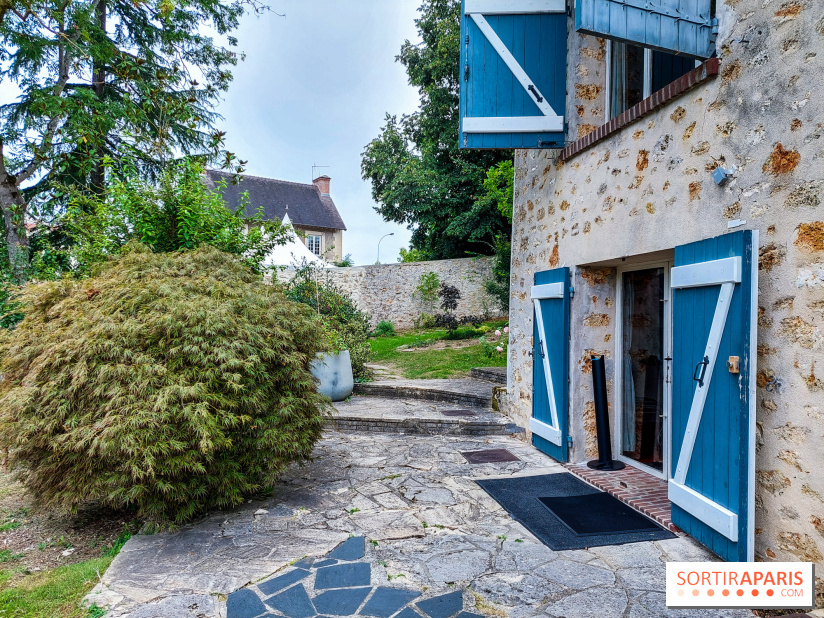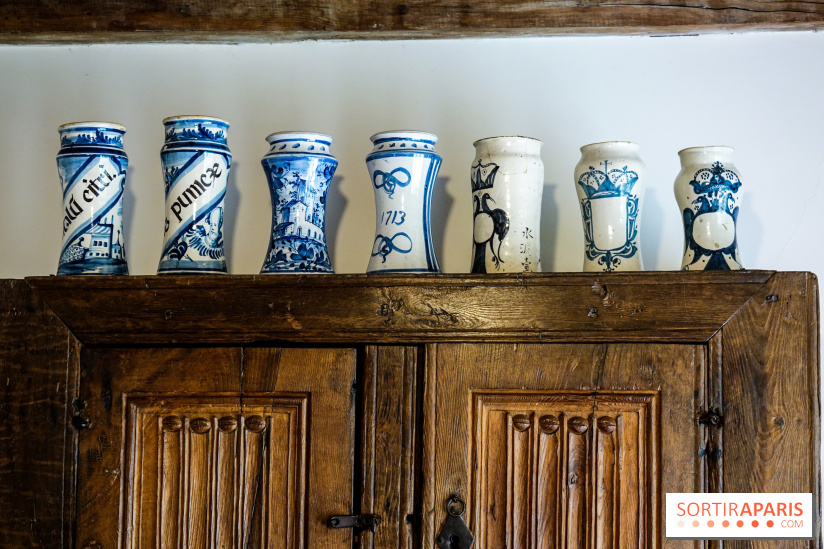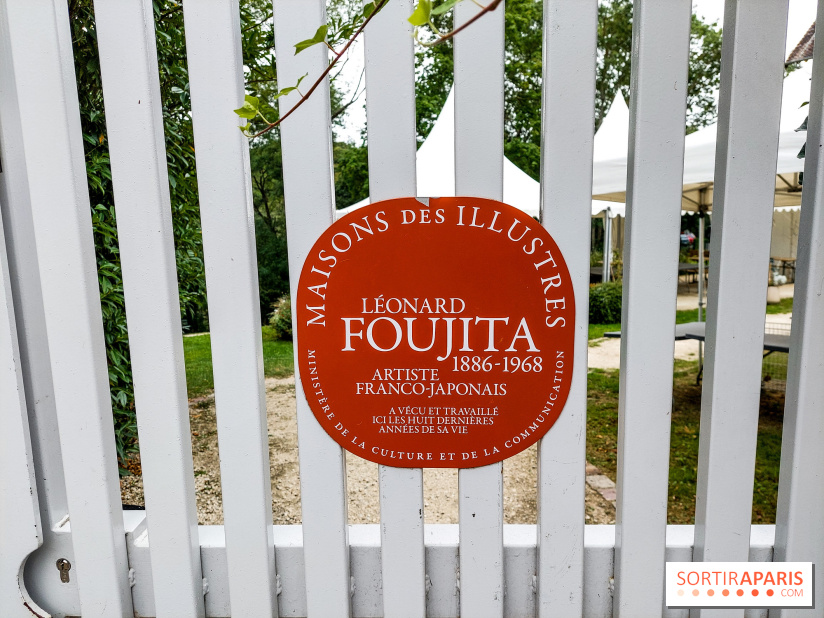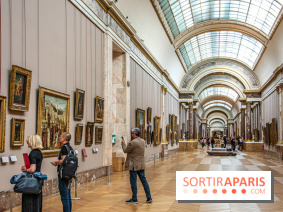Foujita. This is the name of a great artist known to many as a painter, but who hides many other facets. Considered a key figure of the Roaring Twenties, Foujita spent half his life in his native Japan and the other half in France. In fact, it was here that he spent the last years of his life, in a smallEssonne commune called Villiers-le-Bâcle. This village, nestled in the heart of the Vallée de la Mérantaise and on the edge of the Saclay plateau, is home to the famous Maison-atelier Foujita, opened to the public in 2000.
Listed as a Monument Historique and awarded the"Maisons des Illustres" label in 2011, the Maison-Atelier Foujita is an opportunity to learn more about the artistic and personal life of this incredible dandy-like artist, a true jack-of-all-trades and great collector!
But before pushing open the doors of this sublime house, the tour begins in the former presbytery, where two exhibition rooms have been set up to provide an introduction to the life and career of Léonard Tsuguharu Foujita, considered one of the most prominent painters of the early 20th century.
The film takes us back in time to Tsuguharu Foujita 's birth in Tokyo in 1886. We follow him through the most important years of his life, with his arrival in France in 1913, his encounters with the women in his life, including the young painter Fernande Barrey, his muse Lucie Badoud - alias Youki - who became his companion, then Madeleine Lequeux, a young model and music-hall dancer who died suddenly in 1936, not forgetting Kimiyo Horiuchi, his last companion, who donated the house to the Essonne department in 1991.
The film also looks back at his impressive world tour between 1931 and 1933, during which he visited Latin and Central America, as well as the East Coast of the United States, before returning to Japan. Foujita finally returned to France in 1950, settling with Kimiyo in the Montparnasse district of Paris, before obtaining French nationality five years later. In 1960, he fell under the spell of the village of Villiers-le-Bâcle, where he bought an 18th-century rural house that was to be his last residence, a house that admirers of the artist can now discover on guided tours that we highly recommend!




The former presbytery now houses two exhibition rooms. Foujita's works are on display, including drawings and models, as well as archive photos and objects that Foujita collected, such as this kabuki wig or this doll bearing the artist's Légion d'honneur.
Then on to his home, via the sublime garden, where Foujita planted a Japanese maple tree. The guided tour of the house, which has remained unchanged since the artist's death in 1968, begins on the first floor, where the kitchen and dining room are located. We are surprised by the many small appliances that belonged to Foujita, including those used to make crushed ice. In the dining room, the style is more rustic, with cabinets from Spain and gourds from Germany.
We then climb a few steps to reach the house's street entrance, where the sublime painting " Avec qui voulez-vous lutter? " hangs, and where we also discover a fascinating 15th-century wooden statue. Just behind, you can see the living room and bedroom.
What's striking about this motley home - in the image of its former owner - is the contrast between modernity and tradition, as in Japan, with a decor at the crossroads of Western and Japanese influences, where art and craftsmanship are one and the same. There's this stainless steel sink, for example, not far from the Delft tiles in the kitchen, then this Danish table and convertible sofa, very modern for the time, not forgetting these two screens - separating the living room from the bedroom - on which we find Foujita 's favorite symbols (the cat, the penguin, the garter, the fish, the winged heart...). And then there are the many vintage objects, like the medicine jars used as vases, and others customized, like the tin cans transformed into watering cans.




Finally, the masterpiece, the studio, is to be discovered on the top floor of the house, where the attic used to be before Foujita undertook impressive renovations. The large studio reveals the artist's many facets, with a sewing machine used to make some of his clothes, a pressing machine for his illustrations, not forgetting of course his brushes, paint tubes and easel facing an incredible mural, a fascinating preparatory drawing for his last major project: the Notre-Dame-de-la-Paix chapel in Reims. On closer inspection, you can even read the date on which part of this mural was painted - November 27, 1965, when Foujita was 79 years old. The preparatory drawing also shows the faces of his favorite painters, including Raphael, Michelangelo and, of course, Leonardo da Vinci, whose first name he took at the time of his christening in 1959.
Foujita was not only a famous painter of the École de Paris, but also a graphic artist, illustrator, ceramist, stylist, do-it-yourselfer and great collector. This guided tour of the Maison-Atelier Foujita is an opportunity to delve into the fascinating life of this all-round artist, who continues to fascinate and surprise us more than 50 years after his death.
For the more curious who would like to discover the artist's intimacy and push open the doors of this incredible Parisian place of memory, please note that the Maison-Atelier Foujita is open Tuesdays, Thursdays and Fridays, by appointment only. Visits on Saturdays and Sundays are by appointment only. Please note that tours of the Maison Foujita must be guided. Admission is free. The Maison Foujita also organizes a number of events, such as the Journées du Patrimoine (Heritage Days ) and the Nuit des Musées (Museum Night). Please consult the program on the official website.
Location
Foujita house-workshop
9 Route de Gif
91190 Villiers le Bacle
Official website
foujita.essonne.fr



















